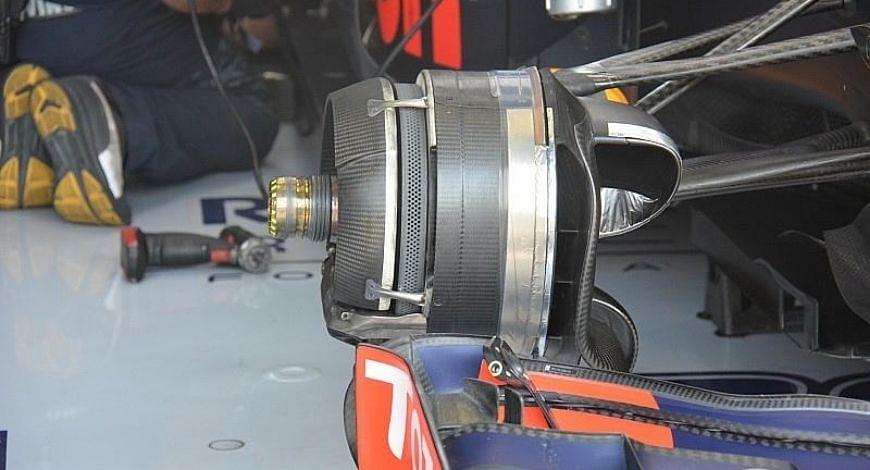Brake Ducts F1: What’s the purpose of using brake ducts in a Formula 1 car, a small physical component keeping the whole braking system alive.
In Formula 1 more than speed, a car should have a much more efficient braking system for the safety of the driver and secondly a better racing performance on the turns and tracks with lesser straights.
With the force applied on an F1 car during the race, the brake discs receive a huge amount of heat. Though maximum temperatures for the brake discs can reach 1,000°C or more.
These carbon disks can manage to handle such high temperature easily. However, high temperatures over a prolonged period can create some issues.
Therefore, the brake discs need a cooling system for more efficient use and better life of these brakes. Over here the use of brake ducts come in. The brakes need air passing through the brake ducts and out through the uprights to cool them down.
In a side of a brake disc, there are at least a thousand of holes drilled in to maximise the surface area and therefore the cooling potential. While these holes help in bringing the temperature significantly down during the straights.
Meanwhile, the discs reach higher temperatures because the thermal mass of the disc is lower. If the discs get too hot then the drivers have to deal with the ‘Fade’.
Fade means that there is not enough mutual friction between the pads and discs, rendering the brakes much less effective to slow the car.
Bigger brake ducts a problem?
After seeing the above points, one would wonder that these holes solve the problem easily then they should be bigger to bring in more cooling and better performance of discs.
It is true that it would be better for discs if there’ll be bigger holes, as more amount of air will be able to pass through it. But it will also affect the aerodynamics of the car.
Thus, a balance must be found to provide the right level of cooling without affecting the aerodynamics flow. The brakes can run as low as 200°C. If the brakes are too cold, there isn’t enough bite or initial grip to slow the car down.




